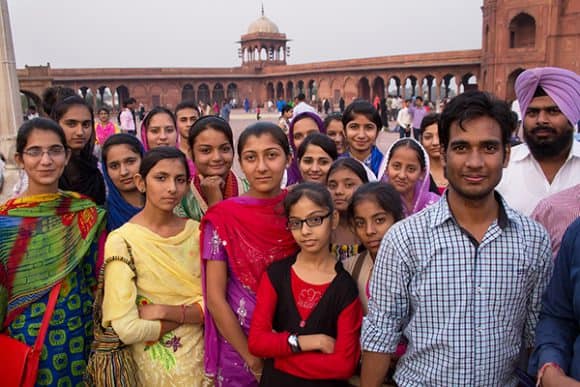By Nandita Saikia, Postdoc Research Scholar at IIASA
What matters more when it comes to preventing unexpected and tragic adult deaths, between the ages of 15 and 60, in low- or middle-income countries? Is it wealth? Or education?
With the advent of demographic and health surveys (DHS), empirical studies documented that the education level of mothers matters more than the wealth of the household when it comes to preventing deaths among children in these countries. However, the same question largely remained unanswered for adults, as such surveys rarely collect information on adult deaths and the socioeconomic status of the dead individuals. In these countries, in general, death registration systems are poor, which again hinders scientific studies addressing this issue.

© Donyanedomam | Dreamstime.com
One possible solution is the clever use of indirect methods or models on census and survey data, developed by demographers to derive rates from limited, deficient and defective data. These methods use indirect information collected by surveys for a different purpose. For example, by using women’s siblings’ survival status, one can estimate maternal mortality, or by using women’s widowhood status, one can estimate male adult mortality.
In our recent study on India, we used one such method, called the Orphanhood method, to document life expectancy differences in adulthood by important socioeconomic characteristics. Because of the reasons mentioned above, there is hardly any scientific evidence on life expectancy differences by education or economic status in India, a country with exceptional cultural and socioeconomic diversity. The importance of studying adult mortality disparity in India also lies in the fact that India experiences relatively higher adult mortality than some of its neighboring countries with similar level of economic development. India’s official statistics shows that adult females belonging to the northeastern state of Assam have more than two times the mortality risk of adult females belonging to the southern state of Kerala. In addition, because of drastic reduction of under five deaths in India in recent years, more and more premature deaths in India will occur in adult age in near future. We used adult parental survival data from a nationally representative large-scale survey, called the India Human Development Survey, 2015-2016, to estimate life expectancy at age 15 in 1998-1999.
We found that lower levels of education of the deceased adults or their offspring, leads to more disparity than any other socioeconomic characteristic, including income status of the offspring, caste, or religion. Literate adults of both sexes at age 15 lived about 3.5 years more than that of their illiterate counterparts. On average, parents of children educated to higher-secondary level (and above) gain an extra 3.8-4.6 years of adult life compared to parents of illiterate children. We found that disparity in adult life by caste and religion is much smaller than disparities arising from educational attainment. For example, female Hindu adults lived 1.3 years more than female non-Hindu adults and male Hindu adults lived 0.9 years more than male non-Hindu adults.
One inherent limitation of indirect demographic methods is that they cannot provide estimates in the most recent years. Despite our estimates referring to a time period about twenty years ago, they are still crucial, as this kind of disparity in adult deaths does not disappear in such a short time span. Our results suggest that investing in education can be more rewarding than anything else to prevent untimely deaths, and to prevent inequalities across population subgroups. Meanwhile, we suggest including appropriate indirect questions in surveys or censuses to track survival status by social group or small geographical area until vital registration systems in countries such as India become fully functional.
Reference:
Saikia N, Bora JK and Luy M (2019). Socioeconomic disparity in adult mortality in India: Estimations using the Orphanhood method. Genus DOI: 10.1186/s41118-019-0054-1 [pure.iiasa.ac.at/id/eprint/15730/]
Note: This article gives the views of the author, and not the position of the Nexus blog, nor of the International Institute for Applied Systems Analysis.

You must be logged in to post a comment.